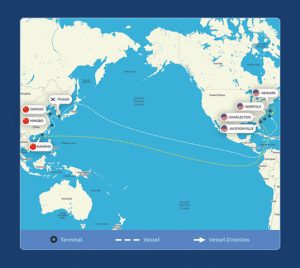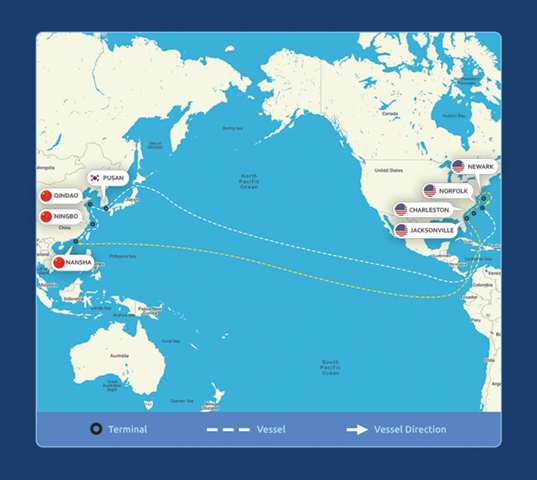
Singapore-based Sea Lead Shipping on March 3 revealed that it was launching a new service linking ports in East Asia with ports on the East Coast of the United States, while completely bypassing West Coast ports.
“The Asia East Coast (AEC) service will provide shippers with a reliable and timely service that avoids the port congestion that is hampering efficient service at many other (West Coast) ports,” Sea Land said in a statement.
The new weekly service commenced March 7 with the first sailing from the Port of Nansha in south China.
Port rotation for the service will be as follows: Nansha – Ningbo (east China) – Qingdao (China) – Pusan (South Korea) – Norfolk (Virginia) – Newark (NJ) – Charleston (SC) – Jacksonville (Fla.) – Nansha.
“The AEC service from Sea Lead marks its first regular service to the East Coast of the United States and will be served by four ships with an average capacity of 6,100 TEUs,” according to Sea Land.
The company also said that it’s is looking at possible vessel sharing arrangements with partners to further improve the frequency of the service, with the aim being deploying a fortnightly rotation in the near future.
“Port congestion has been a challenge for everyone recently and the AEC will allow us to service ports that are more efficient for our customers,” Sea Land Managing Director Cho Kit Wei said. “We are confident that the market and our partners will respond well to the service, and we look forward to developing strong partnerships on this trade lane.”
Sea Lead’s latest service adds to its existing services that cover Far East to the U.S., India, Middle East, Mediterranean, Oceania and Europe, and is expected to see further expansion in the near future.
Sea Lead, a privately-owned global shipping line founded in 2017, currently has a presence in 18 countries and focuses on enabling and simplifying international trade among major economies and between emerging markets.

